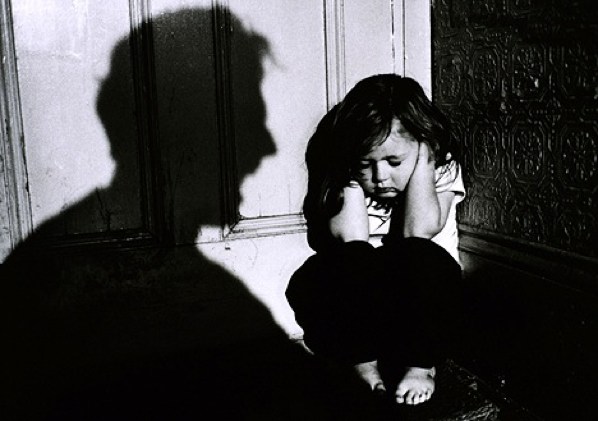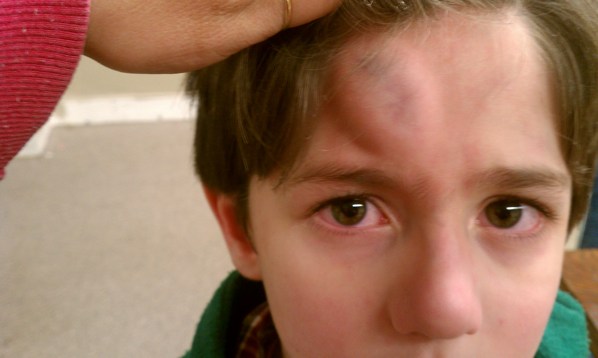 Weird Stuff
Weird Stuff  Weird Stuff
Weird Stuff  Mysteries
Mysteries 10 Tragic Disappearances and Deaths in Joshua Tree National Park
 History
History 10 Ways Childhood Really Sucked in the Old West
 Music
Music 10 Name Origins of Famous Bands from the 1990s
 Religion
Religion 10 Biggest Turnarounds by the Catholic Church
 Weird Stuff
Weird Stuff 10 Unbelievable Times Laws Had Unintended Consequences
 Humans
Humans Ten Historic Women Who Deserve Way More Credit Than They Got
 Movies and TV
Movies and TV 10 Films That Spawned Major Lawsuits
 History
History Ten Times Towns Were Wiped Off the Face of the Earth
 Creepy
Creepy 10 of the Most Disturbingly Haunted Public Houses in the UK
 Weird Stuff
Weird Stuff 10 Niche Subcultures That Are More Popular Than You Might Think
 Mysteries
Mysteries 10 Tragic Disappearances and Deaths in Joshua Tree National Park
 History
History 10 Ways Childhood Really Sucked in the Old West
Who's Behind Listverse?

Jamie Frater
Head Editor
Jamie founded Listverse due to an insatiable desire to share fascinating, obscure, and bizarre facts. He has been a guest speaker on numerous national radio and television stations and is a five time published author.
More About Us Music
Music 10 Name Origins of Famous Bands from the 1990s
 Religion
Religion 10 Biggest Turnarounds by the Catholic Church
 Weird Stuff
Weird Stuff 10 Unbelievable Times Laws Had Unintended Consequences
 Humans
Humans Ten Historic Women Who Deserve Way More Credit Than They Got
 Movies and TV
Movies and TV 10 Films That Spawned Major Lawsuits
 History
History Ten Times Towns Were Wiped Off the Face of the Earth
 Creepy
Creepy 10 of the Most Disturbingly Haunted Public Houses in the UK
10 Most Common Traits of Potential Serial Killers
This list aims to look at the common traits of serial killers. What makes them tick? Why are they compelled to do what they do? Are they made by what surrounds them in their infancy, or are they born with certain traits that predispose them to violence? The ten characteristics below may not be present in every serial murderer – but they’ll give you an idea of some of the warning signs.
SEE ALSO: Top 10 Evil Serial Killers

Children who are exposed to alcohol and substance abuse in the womb may suffer from serious birth defects. Small eye openings, retardation, a small head and brain and central nervous system issues are just some of the problems they could face, if they survive.
Growing up in a home where substances are abused can be even worse. ADHD, attachment disorders, doubt and feelings of inadequacy, depression and behavioral problems will be evident from a very young age. According to the FBI’s statistics, the childhood homes of more than 70% of serial killers experienced problems related to substance abuse. Be that as it may, there have actually been very few serial killers (relatively speaking) addicted to alcohol and substances – but many of them are known to have encountered such things in their youth.
Get inside the heads of history’s most disturbed killers with Serial Killers: The Method and Madness of Monsters at Amazon.com!

It almost goes without saying that most serial killers were abused as children. According to the interviews and discussions that have been held with known serial killers, emotional abuse and neglect has been the form of abuse most of them (50%) suffered.
They were humiliated often – and when parents meted out discipline, it was unfair, unpredictable, destructive and wicked. Even when a child is merely neglected, huge developmental failures can occur. The child will become desensitized; he will begin to believe that this emotionally barren world that surrounds it is something normal – and so he will grow up devoid of empathy for others.
Emotional abuse impairs a child’s self-esteem, and interferes with his ability to function adequately in society, succeed academically, and form healthy, intimate relationships. This is why we see that serial killers often fail to keep their jobs for any period of time and only rarely have successful relationships.

Accessible research material tells us violent sexual events during childhood have serious adverse affects on an individual’s development. More than one known serial killer was forced to dress up as a girl as a form of punishment. The witnessing of violent sexual acts between family members and/or parents had some of the most damaging effects.
Furthermore, some contracted venereal diseases as teenagers; were punished for masturbating as children; or were sexually abused, most often by parents or family members. Such experiences in childhood will often create violent fantasies that continue into adulthood.
Childhood abuse leads to social isolation, learning difficulties (46% of serial killers never finish high-school), self-control issues and seizures. This research into child abuse serves as compelling confirmation that serial killers are made – not born.

Even though bed-wetting in itself has been discredited as a predictor of later violent tendencies, it is speculated that it might be related to arson and animal cruelty in some way. Researches argue that persistent bed-wetting past the age of five is demeaning for a child, especially if parents or other figures of authority tease or belittle them about it. The child may then act out against animals or use arson to channel their anger and frustration. Over 57% of serial killers were bed-wetters until an unusually advanced age.

Family members of future serial killers are usually out of step and at odds with each other. Their relationships are malfunctional and debilitating. These families also have a tendency to move around a lot, and the children are normally removed into shelters before they can turn 18.
It all boils down to the idea that such children have no meaningful relationship as they grow up, and therefore end up lacking the capacity to forge such relationship; they end up as “loners”. Serial killers are rarely remembered by classmates, as they rarely had any close friends. As they are frequently bullied by other kids, anti-social tendencies will also develop at an early age. A careful observer will see that this child starts dabbling in arson and theft, the use of dangerous weapons, hostility and aggression, and a complete disregard for others’ rights.
 Serial killers’ fantasies are often about control and violation. In fact, during research, it became evident that serial killers could remember NO positive fantasies they had as children. Some would fantasize about mutilating themselves or their genitals. They will even fantasize about their own traumas, over and over again – the difference being that in these fantasies they are the assailant.
Serial killers’ fantasies are often about control and violation. In fact, during research, it became evident that serial killers could remember NO positive fantasies they had as children. Some would fantasize about mutilating themselves or their genitals. They will even fantasize about their own traumas, over and over again – the difference being that in these fantasies they are the assailant.
Serial killers in the making will never discuss these horrid fantasies with anyone, but thoughts of fulfilling them will recur more and more frequently. Before the serial killer kills for the first time, the fantasies normally focus on committing the murder. Afterwards, the fantasies will focus on committing each murder more successfully, and with greater efficiency.
Discover a universe full of ridiculously interesting facts with Listverse.com’s Epic Book of Mind-Boggling Top 10 Lists
at Amazon.com!

Most serial killers admitted that during their teenage years they avoided parties and other social events. They definitely never experimented as normal teenagers do with sexual activities among their peers, rather preferring masturbation and other auto-erotic activities such as pornography. In some cases there would be obsessive masturbation – as in the case of Andrei Chikatilo, who had awful scarring on his penis due to the aggression that accompanied his masturbation.
Without any substantial social structure in his life, the killer is unable to embark on a normal sexual relationship, and thus is forced into solo sexual activities. Certain forms of media, such as detective magazines, often have lurid tales of sex and murder that can also serve as an extra form of arousal – linking sex and murder together.

From an early age, many serial killers are intensely interested in voyeurism and fetishism as well as other paraphilias. Many will start their deviancy as relatively harmless peeping-toms, before moving on to house-breaking, rape, and murder. Given that elements of bondage and dominance feature so strongly in most paraphilias, it is no surprise that this is often the route followed after adolescence.

Almost all serial killers – in fact, 99% of them – admitted that they started by acting out their violent fantasies on animals before graduating to human beings. Due to the dysfunctional families most serial killers come from, such pathological and abnormal behavior may be ignored or completely missed – as in the case of Jeffrey Dahmer, whose father was unperturbed by the fact that his son was dissecting animals. These acts of animal cruelty are a great source of pleasure to young killers, and they manage to perfect the art completely – later performing the same acts on their human victims.

Head injuries received during accidents, repeated head trauma suffered during physical abuse or injuries during birth have been suggested as a very important link to aggressive and violent behaviour. Damage to the limbic brain, hypothalamus or temporal lobe may cause bouts of spontaneous aggression. These areas are involved with hormones, aggression, emotion and motivation; injuries to them may also result in seizures and forms of amnesia.
70% of serial killers received extensive head injuries as children or adolescents, clearly showing the link between these types of injuries and serial murder. Some researchers believe that the pre-frontal cortex (the area involved in planning and judgement) does not function properly in psychopaths.


![10 Creepiest Photos Of Victims Taken By Serial Killers [DISTURBING] 10 Creepiest Photos Of Victims Taken By Serial Killers [DISTURBING]](https://listverse.com/wp-content/uploads/2018/09/Regina-Kay-Walters-featured-2-150x150.jpg)





